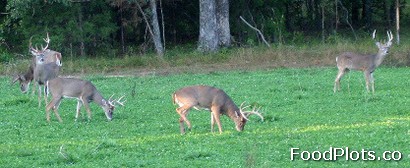There is no doubt that food plots can be an integral part of white-tailed deer management, but it’s important to remember that there is more to managing a deer herd than just providing good nutrition. The development of a successful deer management plan requires an understanding of white-tailed deer ecology and habitat requirements, but equally important is the understanding of realistic herd management goals. There are, of course, also many controllable and uncontrollable factors will affect the success of a deer management plan. This makes all varieties of wildlife management a mix of science, art and a little luck.
Each landowner will have limitations related to the acreage under management, soil fertility, land-use patterns, neighboring properties with varying goals, and many other factors that will impact the deer that use and live on your property. Ignoring these factors when developing a deer management plan will likely lead to unrealistic management goals, failure and heart ache. No number of food plots can make up for what the neighbors do on their property, though some good plots may help you keep some of those deer on your place. It all depends.

It’s important for property owners to be 100 percent involved with the deer on their property as well as the land itself to achieve success. Gathering and using information on the local deer population and habitat characteristics into the decision-making process will greatly increase the chances of success. This information can be used to evaluate whether a particular management goal is achievable. In most cases, success is more achievable when you initially address a couple small-scale management goals and increase the number and scale of goals over time as more experience is gained and data are collected.
Implementing habitat management practices such as surveys deer, planting food plots, cover development and everything beyond will benefit the whitetail population, but having a plan of action will be the GPS that keeps you on the road. Habitat enhancement when combined with herd improvement can be very rewarding, particularly when you set goals based on realistic expectations for the area and clearly identify the appropriate actions to take to achieve those goals. Supplemental feeding through food plots can help, but it is not and will never be the silver bullet to a quality deer herd. As long as they are a part of the overall plan, then you’re on the right track!